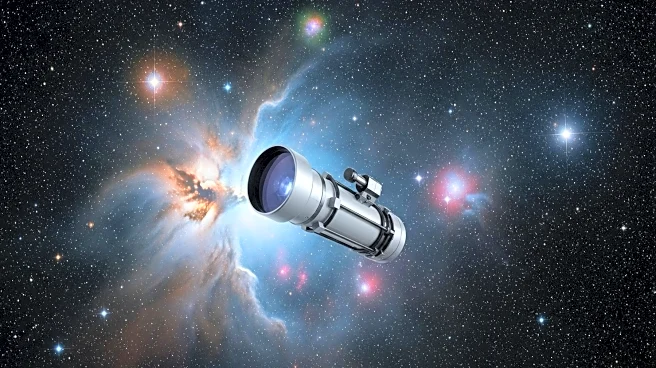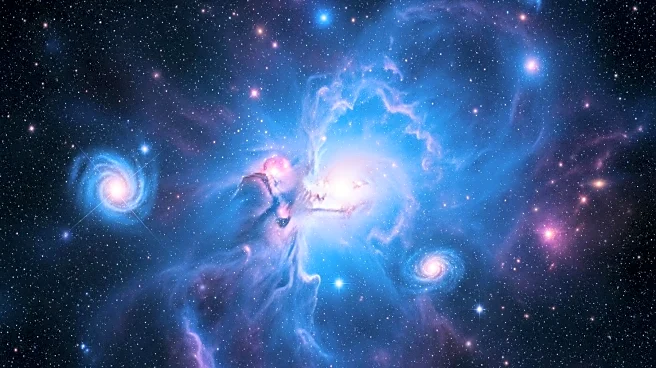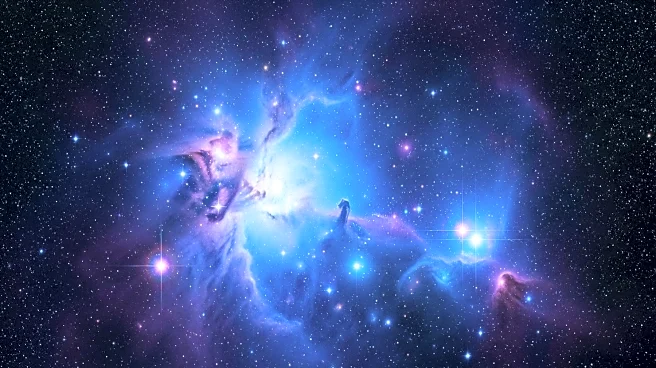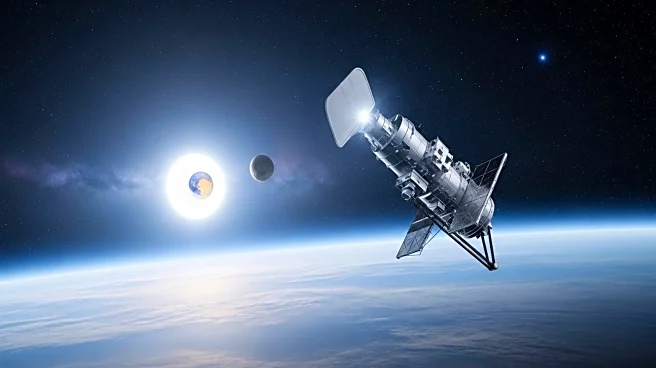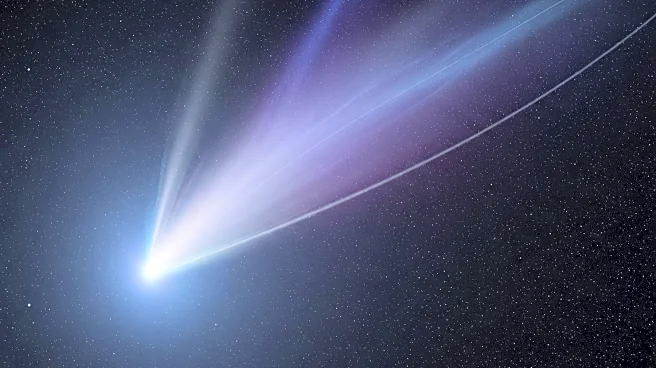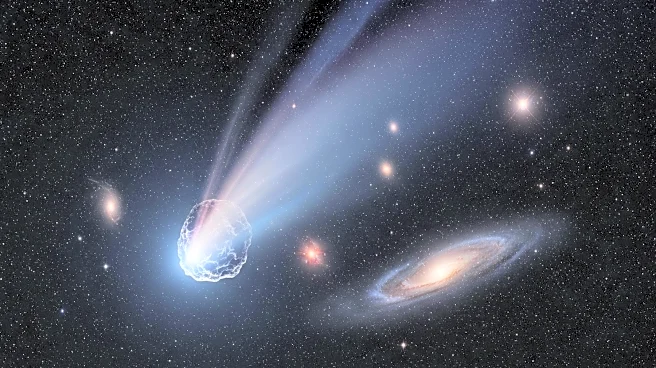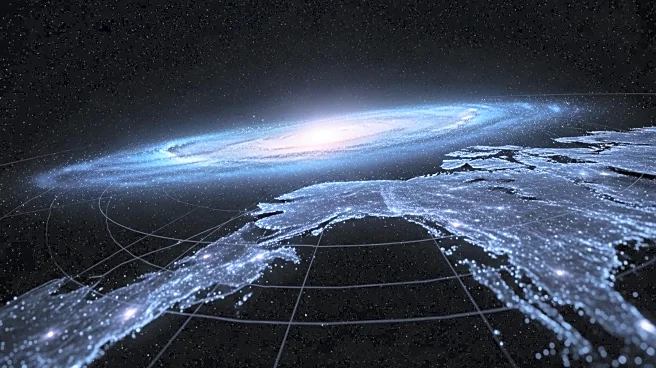What's Happening?
NASA's James Webb Space Telescope has provided a detailed view of the Sagittarius B2 molecular cloud, the largest and most active star-forming region in the Milky Way galaxy. Utilizing its NIRCam and MIRI instruments, the telescope captured images showing massive stars and glowing cosmic dust. The darkest areas in these images indicate regions where stars are still forming within dense clouds. This discovery offers new insights into the processes of massive star formation and the unique activity of the Sagittarius B2 region.
Why It's Important?
The detailed images from the James Webb Space Telescope are crucial for understanding the mysteries of massive star formation. The Sagittarius B2 region's activity, as revealed by Webb, could provide answers to why this area is more active than other parts of the galactic center. This information is vital for astronomers to comprehend the conditions that lead to star formation and the evolution of galaxies. The findings could also influence future astronomical research and the development of theories regarding the formation of stars and galaxies.
What's Next?
Further research is expected to focus on the masses and ages of the stars within the Sagittarius B2 region. This will help astronomers understand the timeline and processes of star formation in this dense galactic center. The continued use of Webb's instruments will likely lead to more discoveries about the molecular composition and dynamics of star-forming regions, potentially reshaping current astronomical models.

